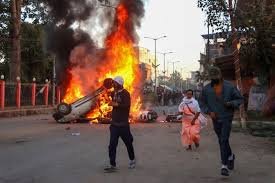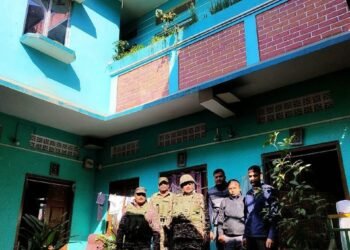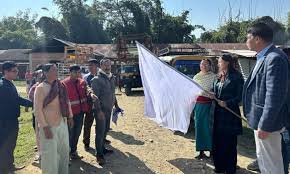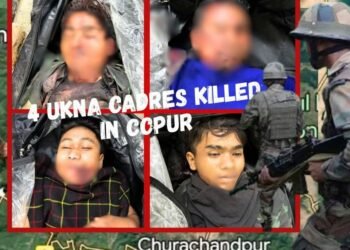Chisoti, once a bustling pilgrimage stop, lies in ruins as rescue teams race to find survivors amid debris and rising waters. Control rooms and helplines set up as distraught families search for loved ones swept away in the Himalayan flash floods.
BY PC Bureau
August 15, 2025: In the wake of a devastating cloudburst that tore through Chisoti village in Jammu and Kashmir’s Kishtwar district, officials have confirmed that 21 of the 46 victims recovered so far have been identified. The tragedy, which struck around midday on Thursday, unleashed a torrent of water, mud, and debris, sweeping away homes, shops, vehicles, and even a security camp in the remote Himalayan belt.
Authorities said the process of identification has been painstaking, with families scattered and communication lines disrupted. “We have shared pictures of the bodies with families through WhatsApp so they can be identified,” a senior official explained, noting that the disaster has triggered a flood of desperate calls from relatives seeking missing loved ones.
The death toll is expected to climb as rescue teams continue to search through debris-strewn terrain. At least 67 people remain unaccounted for, while over 160 have been rescued—38 of them in critical condition. Villagers reported seeing at least 10 more bodies floating in the Chenab river, and retrieval operations are under way.
READ: “O Ganga Behti Ho Kyun”: Amid Celebration, the Other India Still Bleeds
The cloudburst coincided with the annual Machail Mata Yatra, when Chisoti serves as a bustling base camp for pilgrims making their way to the high-altitude shrine. Between 12 noon and 1 pm, the peaceful pilgrimage site was transformed into a scene of chaos as flash floods ripped through the village, flattening structures and sending torrents of mud and rock surging through the valley.
Video from today shows the aftermath of flash floods and ongoing rescue efforts in #Kishtwar.
56 bodies recovered so far, reporting AFP citing a senior disaster management official.
Dozens more remain missing with at least 100 injured. pic.twitter.com/Vg4SaZIN2k
— Ahmer Khan (@ahmermkhan) August 15, 2025
Two villages further uphill—Machail and Hamori—remain cut off. Officials say hundreds of people are stranded there, unable to communicate with the outside world after power lines were snapped and mobile phone batteries drained. Authorities hope to establish contact soon to assess their safety.
In response, the Jammu and Kashmir administration has set up a control room-cum-help desk in Paddar, about 15 km from Chisoti, to coordinate relief efforts and assist families. Five officials have been deployed to man the desk, which has been receiving a constant stream of distress calls. The helpline numbers—9858223125, 6006701934, 9797504078, 8492886895, 8493801381, and 7006463710—are operational for inquiries about missing persons.
Amid the devastation, a temple located in the heart of the flooded area somehow withstood the force of the deluge, standing as one of the few intact structures. However, a langar (community kitchen) set up for devotees was washed away, along with numerous shops and a security outpost. Vehicles parked at the bus stand, the starting point for the trek to the Machail Mata shrine, were left mangled and half-buried in mud.
#Kishtwar #Cloudburst
Authorities have so far recovered 120 bodies from the disaster site Rescue operations are ongoing as many people remain missing. Teams are working round the clock to search for survivors and provide aid to the affected families
More Details are Awaited pic.twitter.com/wTkUyjVggJ— OSINT J&K (@OSINTJKL) August 15, 2025
READ: PM Modi Unveils Diwali GST Cut, ₹1 Lakh Crore Jobs Push in I-Day Speech
Rescue teams, comprising local volunteers, disaster response personnel, and security forces, are braving treacherous conditions in their search for survivors and victims. Officials say fresh search operations are likely to unearth more bodies in the coming days as they dig through layers of debris and silt left behind by the floods.
The disaster has cast a deep pall over the region, with the voices of grieving families echoing through relief camps and control rooms. For the people of Chisoti and its surrounding hamlets, the cloudburst was not just a natural calamity—it was a sudden erasure of homes, livelihoods, and entire communities.












